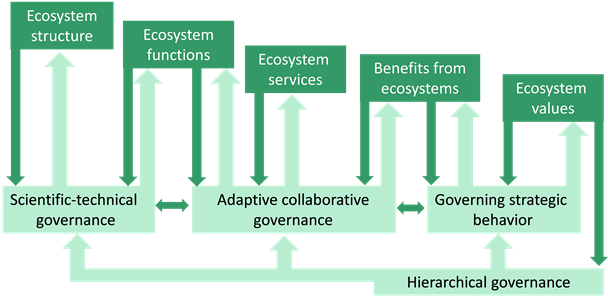The concept of “Multi-level Governance” (MLG) was developed to describe policy-making within the EU.
MLG is characterized by a multitude of interactions between actors -governmental as well as, increasingly, a variety of non-governmental ones like NGOs or business associations- operating at different levels of governance – the global, European, national, sub-national and local level. Interactions do not simply follow a hierarchical top-down pattern from the European via the national to sub-national levels, but take place in networks across levels and policy-making sectors.
Research results indicate that environmental outcomes depend on the preferences of the involved actors and that governance systems comprised of multiple levels and centres tend to perform better. This is especially relevant in the case of biodiversity policy, because of the public goods character of biodiversity and most ecosystem services. The provision of biodiversity and ecosystem services takes place at the local level and by specific stakeholder groups, but it is enjoyed by a larger (in some cases by the global) community. The values of arguments (and interpretations of what is meant by terms such as biodiversity or ecosystem services) vary at different levels of policy making and between different stakeholder groups, and therefore improving comprehension of the way these values ‘translate’ (i.e. transfer and scale) between contexts can in principle greatly improve the tuning and integration of policies and thereby their effectiveness.
Several international agreements, like the Convention on Biological Diversity (CBD) and the Convention on International Trade and Endangered Species (CITES) and European policies, such as the Common Agricultural Policy, the Water Framework Directive, the Habitats and the Birds Directives, can have quite different impacts on the different governance levels. This complex policy-making setting of biodiversity governance (illustrated by the figure at the top of the page) provides many opportunities for involvement of interested actors, who, if they have the necessary capacities and knowledge of the policy process, can optimise the effectiveness of their arguments by locating policy decisions at the level they believe to be most supportive of their interests.
